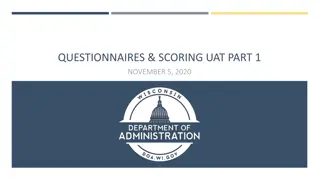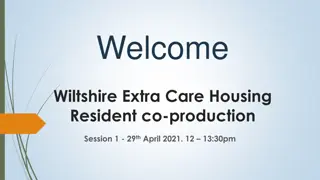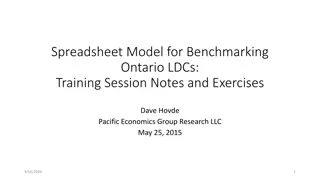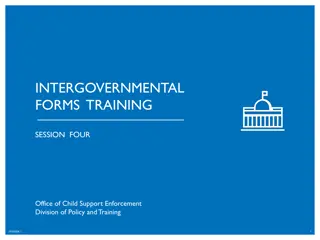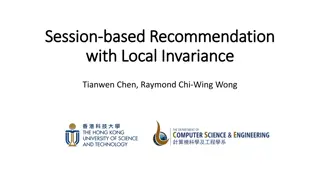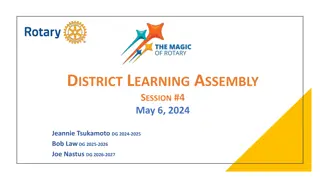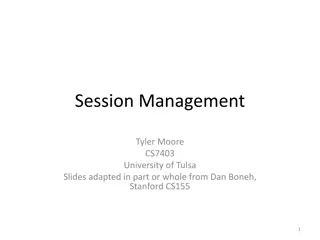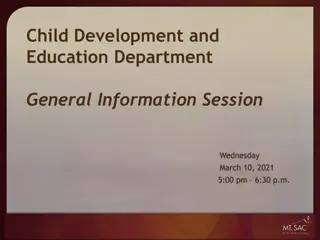
Conditions for Effective Rural Development Strategies
Explore the essential conditions for successful rural development, including land reform, supportive policies, and integrated development objectives. Gain insights into how these factors contribute to agricultural and rural progress, ultimately aiding both rural and urban areas. Delve into the significance of adapting farm structures and land tenure patterns to enhance food production, equity, and efficiency.
Download Presentation

Please find below an Image/Link to download the presentation.
The content on the website is provided AS IS for your information and personal use only. It may not be sold, licensed, or shared on other websites without obtaining consent from the author. If you encounter any issues during the download, it is possible that the publisher has removed the file from their server.
You are allowed to download the files provided on this website for personal or commercial use, subject to the condition that they are used lawfully. All files are the property of their respective owners.
The content on the website is provided AS IS for your information and personal use only. It may not be sold, licensed, or shared on other websites without obtaining consent from the author.
E N D
Presentation Transcript
CONDITIONS FOR RURAL DEVELOPMENT Lecturer: Dr. Maame Adwoa A. Gyekye-Jandoh Contact Information: mgyekyej@yahoo.com College of Education School of Continuing and Distance Education 2014/2015 2016/2017
Session Overview Overview This session explains the three main conditions that are regarded as necessary for a good rural development strategy and rural development as a whole. These are: the importance of embarking upon land reform, the need for supportive policies, which is a proposition that will enable small-scale agricultural development in developing countries., and third, integrated development objectives. The student will see that developing the rural areas and agriculture can also help solve problems of the urban areas. Slide 2
Session Outline The key topics to be covered in this session are as follows: Topic One: Land Reform as a Condition for Rural Development Topic Two: Supportive Policies as a Condition for Rural Development Topic Three: Integrated Development Objectives as a Condition for Rural Development Slide 3
Reading List Todaro, Michael. 2000. Economic Development. England: Pearson Education Limited. Michael Todaro and Stephen Smith (2012). Agricultural Transformation and Rural Development . p. 416-457. Major newspapers and news magazines both locally and internationally, regarding rural and agricultural development. Slide 4
Topic One LAND REFORM AS A CONDITION FOR RURAL DEVELOPMENT Slide 5
Land Reform as a Condition for Rural Development Todaro (2000) argues that three propositions constitute the necessary conditions for the realization of a people- oriented agricultural and rural development strategy. The first proposition has to do with land reform. Proposition 1: Farm structures and land tenure patterns must be adapted to the dual objectives of increasing food production and promoting a wider distribution of the benefits of agrarian progress (Todaro 2000: 394). Land reform is often regarded as a necessary first condition for agricultural development in many less developed countries (LDCs), because it can result in greater agricultural output, greater efficiency and greater equity. Slide 6
Land Reform as a Condition for Rural Development Land reform entails a redistribution of the rights of ownership or use of land away from large landowners in favor of small farmers with limited or no landholdings. Land reform has one central function: the transfer of land ownership or control directly or indirectly to the people who actually work the land. Note that there is widespread agreement among development specialists, scholars, and economists on the need for land reform. Slide 7
Land Reform as a Condition for Rural Development A Food and Agricultural Organization (FAO) report argued that land reform was more urgent today than ever before, because 1) unemployment and income inequalities in rural areas have worsened, 2) existing inequalities could be further worsened by rapid population growth, and 3) large and powerful rural landholders may be able to resist future land reform efforts as technological breakthroughs in agriculture affords them a means of increasing their power and wealth. Slide 8
Land Reform as a Condition for Rural Development If governments could legislate and effectively implement land reform, this would be good for the standards of living of rural folk as a whole. Unfortunately, many governments in the LDCs have not been successful at this because they bowed to political pressure and failed to implement the reforms. Slide 9
Sample Questions Give three reasons why land reform is regarded as a necessary condition for rural development. Slide 10
Topic Two SUPPORTIVE POLICIES AS A CONDITION FOR RURAL DEVELOPMENT Slide 11
Supportive Policies as a Condition for Rural Development The second proposition made by Todaro (2000) for a people- oriented agricultural/rural development strategy has to do with the initiation of supportive government policies. Proposition 2: The full benefits of small-scale agricultural development cannot be realized unless government support systems are created that provide the necessary incentives, economic opportunities, and access to needed credit and inputs to enable small cultivators to expand their output and raise their productivity (Todaro 2000: 395). Slide 12
Supportive Policies as a Condition for Rural Development Despite the importance of land reform to agricultural and rural development, it is likely to be ineffective unless: 1. there are corresponding changes in rural institutions that control production (for example, banks, moneylenders, seed and fertilizer distributors); 2. changes in supporting government aid services (for example, technical and educational extension services, public credit companies, storage and marketing facilities, rural transport and feeder roads); and 3. changes in government pricing policies with regard to inputs and outputs (paying market-value prices to farmers). Slide 13
Supportive Policies as a Condition for Rural Development Supportive policies by governments of developing countries for agricultural and rural development are very necessary to enhance the rural sector, standards of living in rural areas, and therefore for overall national development. Government and private sector supportive policies will go a long way in improving small-scale agriculture through support for technology and innovation as well as improved pricing incentives that will reimburse farmers well and encourage them to produce more. Biological innovations (in terms of hybrid seeds), chemical innovations (for example, fertilizers, pesticides, insecticides), and water control (for example, irrigation), are very important additions that farmers can use to enhance their lands and therefore indirectly enhance their agricultural output. Slide 14
Supportive Policies as a Condition for Rural Development Developing country governments need to move away from the past practice of maintaining low agricultural prices in an attempt to provide cheap food for the urban modern sector. Farmers have to be paid prices at world-competitive prices or prices that are in line with domestic free market prices (within the countries themselves). This would ensure that local food supplies meet the demand in developing countries and can feed majority of their people. Slide 15
Supportive Policies as a Condition for Rural Development Questions to consider: List and explain four examples of supportive policies that can help improve agricultural productivity and enhance rural development in developing countries. Why are supportive policies needed, in addition to land reform, for rural development? Give a brief explanation. Slide 16
Topic Three INTEGRATED DEVELOPMENT OBJECTIVES AS A CONDITION FOR RURAL DEVELOPMENT Slide 17
Integrated Development Objectives as a Condition for Rural Development This third topic seeks to explain that, among other issues, developing the rural areas and agriculture can also help solve problems of the urban areas. Proposition 3: Rural development, though dependent primarily on small-farmer agricultural progress, implies much more. It encompasses a) efforts to raise both farm and non-farm rural real incomes through job creation, rural industrialization, and the increased provision of education, health and nutrition, housing, and a variety of related social and welfare services; b) a decreasing inequality in the distribution of rural incomes and a lessening of urban-rural imbalances in incomes and economic opportunities; and c) the capacity of the rural sector to sustain and accelerate the pace of these improvements over time. Slide 18
Integrated Development Objectives as a Condition for Rural Development The integrated development objectives mentioned above are vital to national development. This is because making efforts to create jobs other than in farming in the rural areas, such as jobs in banking, education, healthcare, will help raise incomes and also increase the rural demand for food and other agricultural products in the rural areas. This can also help raise the incomes of farmers. Focusing on housing, jobs, safe environments, rural industrialization (which would ensure electricity and safe drinking water availability) in the rural areas would also go a long way in helping solve the problems of urban unemployment and population congestion and crime. Slide 19
Integrated Development Objectives as a Condition for Rural Development Todaro (2000: 396) argues that, by restoring a proper balance between urban and rural economic opportunities and by creating the conditions for broad popular participation in national development efforts and rewards, developing nations will have taken a giant step towards the realization of the true meaning of development. Slide 20
Question Questions to consider: List and briefly explain any two examples of integrated development objectives. Mention two reasons why integrated development objectives are vital to rural and national development. Slide 21
Conclusion of Session 6 In this session, you have been introduced to the importance of rural development for overall national development. We have discussed the three major conditions or propositions for rural development: land reform, supportive policies, and integrated development objectives. You have seen that there are important reasons why these propositions or conditions can aid in rural development. In the next two sessions, we shall tackle the interesting topic of Foreign Aid and Structural Adjustment in the Quest for Development. Slide 22
References Todaro, Michael. 2000. Economic Development. England: Pearson Education Limited. Michael Todaro and Stephen Smith (2012). Agricultural Transformation and Rural Development . In Economic Development. p. 416- 457. England: Pearson Education Limited. Slide 23


